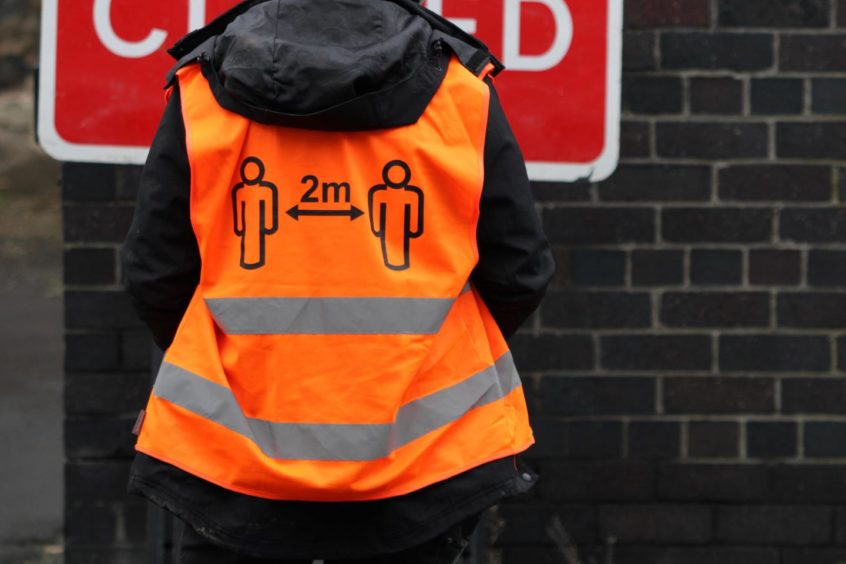Businesses breathed a collective sigh of relief when it was confirmed by the first minister earlier this month that all of Scotland would move to Covid Level 0 on July 19.
This was one of the long-awaited milestones on the road towards the removal of all restrictions on businesses that we expect to see on August 9. Only by removing all restrictions will the economy be able to fully re-open with confidence, and allow businesses the opportunity to recover and grow.
Regrettably, the latest changes to restrictions by the Scottish Government did little to reassure businesses as the modified Level 0 framework deviated away from what we had prepared for.
Moving the goalposts less than a week before the expected changes were due to come into force has caused uncertainty, negatively impacting on business confidence and recovery.
The postponing of the phased return of offices, for example, was a bitter blow for employees and employers alike, many of which had spent time preparing to return to office-based working from July 19 but were then forced to scrap plans and go back to the drawing board.
The impact of delaying the return of office workers also sent shockwaves through other sectors, in particular for those town and city centre businesses reliant on office worker footfall and custom. They are now pinning their hopes on the return of office workers from August 9.
There was also disappointment for Scotland’s hard-hit hospitality sector. Businesses that had been hoping to make the most of summer trade had their hopes dashed as significant restrictions on how they operate and trade endured, including the continued suspension of local licensing hours – providing little reprieve for the night-time economy.
One point of light in the changes was the greater alignment between the Scottish and UK governments on international quarantine restrictions to help support business travel, allowing industry better access in and out of global markets.
But until all restrictions are lifted many businesses operating in Scotland’s travel and tourism sector simply will not be able to open.
Regrettably, the latest changes to restrictions by the Scottish Government did little to reassure businesses as the modified Level 0 framework deviated away from what we had prepared for.”
The international travel industry remains an essential component of Scotland’s wider tourism and hospitality sectors, and it is essential that financial support for these businesses is not only continued but expanded to allow them to fully recover.
Firms had expected to shift up a gear this month, however, modified Level 0 has left them in neutral. It is crucial the Scottish Government continues to ease restrictions as originally planned to avoid any economic recovery sliding into reverse.
Scottish businesses have managed to evolve and adapt incredibly well over the past year, and they have done everything they can to keep employees, customers and clients safe.
As we head towards the lifting of all Covid-19 legal restrictions, the role of the Scottish and UK governments must now evolve too.
That means allowing businesses and communities to operate with autonomy, according to personal circumstances, companies’ preferences and sectoral requirements, in order to foster the secure and sustained return to economic growth that we all so desperately want to see.
New drive to improve quality of north tourism sector after ‘catastrophic’ £0.5bn Covid hit
We know that when lockdown restrictions are eased and businesses are able to open their doors and operate with increased normality, unleashed pent-up demand boosts the economy, with all sectors benefiting from substantial rises in consumer confidence and domestic sales.
In the latest Scottish Chambers of Commerce survey of economic performance, covering the second quarter of the year, businesses reported growth for the first time since the pandemic struck and trading restrictions took hold.
The gradual unlocking of Scotland’s economy boosted growth by 2% in April alone, pushing the economy to a new post-pandemic peak, however, firms still face an uphill battle until we return to the levels of growth the economy was experiencing before the pandemic.
Despite this recent optimism in the economy, businesses still face many challenges and there are risks that could blow Scotland’s economic recovery off course.
Restoring global connectivity ‘key’ to Scotland’s economic recovery
The continued fallout from the pandemic and Brexit has resulted in international trading difficulties for firms in services, manufacturing, and retail that all saw faltering export sales and orders in recent months as they struggled to rebuild supply chains.
Firms have managed, against the odds, to get a foot back on the ladder of economic growth.
Businesses still face many challenges and there are risks that could blow Scotland’s economic recovery off course.”
What they need now from the Scottish and UK governments is the creation of a business-friendly trading environment, agile policy-making, commitments to long-term support, a safety net for struggling businesses, and a firm and stable footing for those working their way back up towards recovery.
Businesses will not recover overnight as restrictions lift, but Scotland’s private sector is key to securing a fair and just economic recovery – one that not only protects jobs in every part of the country but is able to create them again. Investing in them is investing in Scotland’s recovery.
Liz Cameron is chief executive of the Scottish Chambers of Commerce





